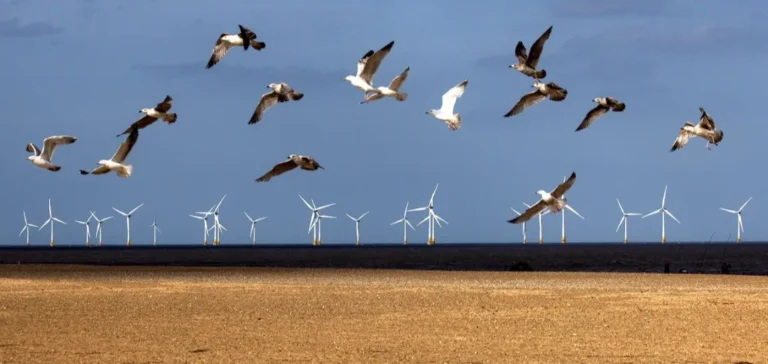The Migralion programme, led by the Office français de la biodiversité (OFB), has released its initial findings after four years of data collection on avian migratory flows in the Gulf of Lion, a strategic area in the Mediterranean. This maritime zone already hosts a pilot floating wind farm with three turbines, with 19 more units planned by 2031 as part of France’s offshore wind development strategy.
The study draws on offshore surveys, coastal radar systems and telemetry devices attached to birds. The results indicate varying degrees of vulnerability depending on the species, but confirm that many migratory birds frequently fly through air corridors that overlap with the blade sweep zones of offshore wind turbines. These findings raise concerns over both direct physical risks, such as collisions, and indirect risks like habitat avoidance.
Flight altitudes raise concerns for ongoing projects
Spatial analysis identified flight altitudes mainly below 500 metres, especially in the spring when birds head northward. According to the OFB, if these flights cannot be completed overnight, birds continue their migration by day at low altitude, placing them directly within the reach of offshore infrastructure. This situation is particularly concerning as new installations emerge in areas still lacking comprehensive avian data.
The Migralion programme therefore recommends continued monitoring campaigns to determine whether bird behaviour has changed since the first turbines were installed. Researchers emphasise the need for ongoing surveillance to adapt projects in response to evolving biological patterns.
Towards adjusted energy planning practices
The initiative comes amid rapid expansion of offshore renewable energy. However, Migralion project leaders believe that current knowledge remains insufficient to accurately predict impacts on migratory species. As migration is a dynamic phenomenon, any changes in habitat or introduction of physical obstacles such as offshore turbines can cause birds to rapidly adjust their behaviour.
The study’s findings underscore the need to incorporate seasonal bird trajectories into planning schemes. According to the experts involved, data from Migralion could be used to reassess priority development zones for upcoming phases of floating wind deployment in the Gulf of Lion.






















